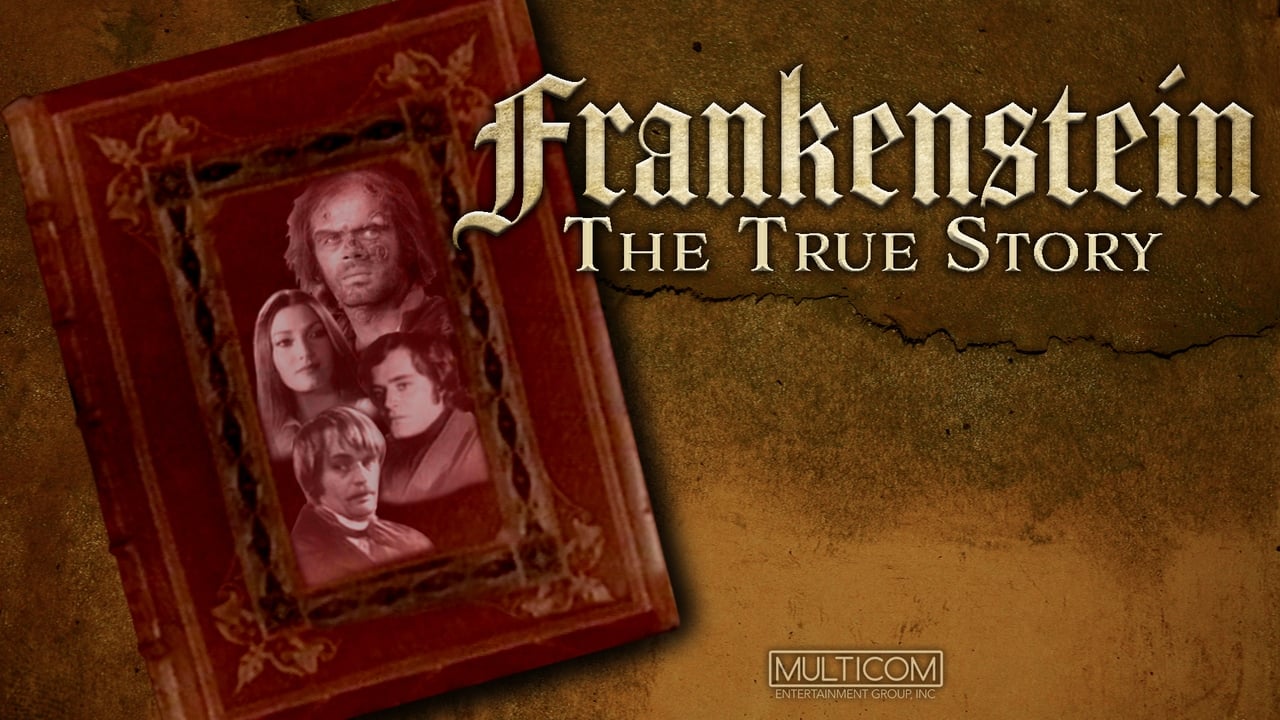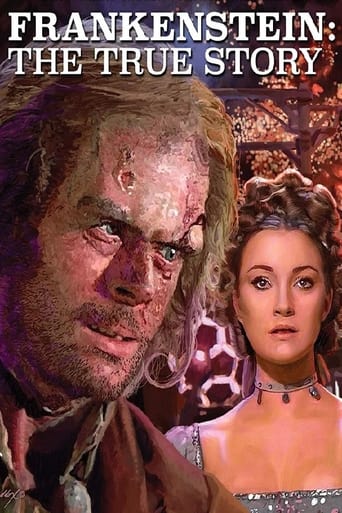

For a project with a running time in excess of three hours, 'Frankenstein: The True Story' seems in a hurry to get on with it, at least initially. Five minutes in, and we've already witnessed the death of Frankenstein's brother William and his subsequent frustration with the fatality; his fianceé Elizabeth (Nicola Pagett) is exasperated by his plans to thwart death by recreating life – it seems as if the telling of the story has almost started without us! Once we've been hurriedly ushered in, the pace slows considerably and most of the first 'chapter' proves to be extremely talkie. Many ominous musings about creating 'the second Adam', some realistic dismembered limbs and the steady unveiling of the incredible cast notwithstanding; it is a necessary build-up to Frankenstein's obsession getting more delirious, and with his friend Clerval's passing, it is finally time to put the impressive laboratory set to good use.David McCallum as Clerval – in this adaption, a medical man (and brain donor) even more driven than Frankenstein himself - is afflicted by a physical malady that fuels his intent. A plethora of famous faces also includes Ralph Richardson, John Gielgud, Tom Baker (only months before his acclaimed role in Doctor Who), Peter Sallis, Yootha Joyce, and – excellent as Prima – Jane Seymour. Considering that Leonard Whiting as Frankenstein is the least prolific in that gang, he is never upstaged by his co-stars; one wonders why he didn't enjoy a lengthier career.Michael Serrazin's very human looking creature is something of a disappointment initially, purely because he is so un-terrifying. No misshapen monster, his slender, bandaged form is indeed what Clerval seemed to be striving for. And yet, like Michael Gwynn's human monster in Hammer's 'Revenge of Frankenstein (1958)', this is a prelude to genuine tragedy – that the handsome, playful, contented child-man soon witnesses his looks deteriorate cruelly. It is telling that when 'pretty', his childish ways amuse his creator – as ugliness begins to take hold, Victor loses patience with him. Serrazin puts in a consistently superb performance throughout, ranging from charming, to vulnerable, miserable, vengeful and downright demonic.The second and final chapter begins after the Creature's unsuccessful suicide attempt and it is during this episode the already tenuous titular claim of a 'true' story becomes even more fractured – but that can be forgiven when the results are so entertaining.Prima proves to overshadow the original creation in every way possible – embraced by high society, loved by all she meets, in fact infuriatingly perfect – especially at manipulation and bitchiness. In possibly this story's most famous scene, she pays the price. The only bit of the original Agatha, with whom the creature had formed an attachment, is her head; in a splendid scene, in front of all, the dishevelled, betrayed, deteriorating creature, violently removes it.After this, the pace enters the uneven phase it did at the beginning. In no time at all, a ship bound for America is an epic battle ground. The creature, now full of understandable hate, has a demented, fiendish persona – laughing as he hoists the terrified Polidori to his death (his – or Clerval's – mocking chants of 'Poli Dolly' thrown against the stormy skies), reduced to skeletal scraps by the lightning he deplores.Despite some unconvincing day-for-night shots, and a lacklustre dummy used for a clifftop stunt, this remains a visually impressive spectacle. 'The True Story' is an intelligent, brilliantly played take on the original novel. It also contains nods (deliberately or otherwise) to other filmic versions and yet presents its own very memorable version of the classic tale.
... View MoreThis is a great movie. It has to be one of the best horror movies ever. Because it is best on one of the best horror books ever. The 1931 version is better. The original Frankenstein is really a silent movie from 1910. It not a very good movie. So really this is a great deal better then the original Frankenstein. I am some who enjoys movies more then books. I have read book. This is better. It is very scary. If this movie does not scary you then no movie will. This movie has a great story line. This movie also has great acting. This movie also has great special effects. It a very well made movie. It is a must see. It is very intense. It is a great movie.
... View MoreDo not let this one fool you. This NOT a faithful adaptation of Mary Shelley's novel. The very idea that the Frankenstein creature is decomposing contradicts that the creature was given life. He's alive, not just reanimated dead tissue, that's a major point in the story. It's a disappointing and senseless twist that is completely unnecessary. If you want a version of Frankenstein that actually follows Mary Shelley's novel check out the version produced by Hallmark and released to DVD by Lion's Gate starring Luke Goss as the creature. That mini-series version of Frankenstein from 2004 is the most faithful to the book.
... View MoreI was so pleased and surprised when I saw the DVD of this film for rent recently. I originally saw it on TV back in '73 (I was about 8) and it has stayed with (haunted?) me every since. A number of people have posted about how it made such an impression on them at the time, and I am certainly in that camp. Judging by other comments, it would seem that the only audience that actually watched the whole thing was between the ages of 5 and 10 :}.Anyway, watching it again last night with much more seasoned eyes, I was able to appreciate so many more aspects of this very well done film. While not a direct interpretation of the novel, it is certainly among the top three film versions of the story. It's not what you would call action packed but surprisingly, clocking in at around 3 hours, doesn't drag either, due to a tight script.It would have benifited from more music throughout as it carries a very sparse score. Guess it wasn't in the budget. In this release there was a very crucial scene which didn't match my memory, and I've come to find out that it had been edited. It was a somewhat gory scene but for crying out loud, it was on TV in '73! And we couldn't put it on the DVD now?? I don't get it. Other than those couple of points, it really is a somewhat forgotten classic.
... View More